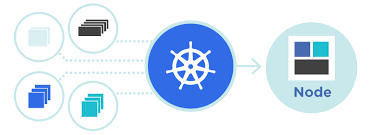Container management is crucial in smoothly coordinating software applications in the ever-changing technological world marked by rapid innovation.
Building a security halo around container management is critical as more and more enterprises shift to containerized environments.
In this article, we explore the complex maze of container security and present the several layers that protect digital ecosystems from malicious actors and potential weaknesses.
You must understand and solve the complex problems that arise in container security if you want to make your containerized apps robust.
Adopt a proactive approach to protect your containerized apps from threats and vulnerabilities. The containerization landscape, including Kubernetes and Docker, gives architects a blank canvas to create reliable and dynamic applications.
But this plethora of technology also increases the risk of security flaws, which leaves you more vulnerable to hackers. Enhance the security of your digital ecosystems with cutting-edge technologies, strict security guidelines, and a persistent dedication to ongoing development.
By taking such a thorough strategy, you can only properly handle the complexities of container security and protect your apps from the ever-growing threats in the quickly evolving IT market.

Table of Contents
Navigating the Container Landscape
Containerization is a cutting-edge technology revolutionizing modern software development. It is situated at the intersection of scalability and agility.
The variety of container orchestration solutions on the market provides architects with a flexible framework for creating robust and dynamic applications.
However, with more technology comes greater susceptibility to security lapses and increased vulnerability to cyberattacks.
Embracing Proactive Vigilance
The principle of prioritizing prevention over cure holds particular relevance in the continually evolving landscape of cybersecurity.
To secure containers effectively, one must take a proactive stance in building a strong digital defense against various possible adversaries.
To do this, state-of-the-art technologies must be carefully integrated with strong policies and an unrelenting dedication to continual improvement.
Unchangeable Infrastructure: A Secure Foundation
The notion of immutable infrastructure stands out as a model of resolve in the pantheon of container security. Immutable infrastructure is made to avoid human meddling in any way so outside parties cannot alter containers.
This architectural strategy offers a strong basis for effective incident response and recovery and strengthens the integrity of containerized applications.
Zero Trust Security Paradigm
The traditional castle-and-moat security concept needs to be updated by the ongoing evolution of the digital realm. The zero-trust security paradigm, which helped to pioneer modern cybersecurity, promotes the idea that no entity—internal or external—should be given implicit trust.
Following this way of thinking in the container management space means that strict authentication, ongoing monitoring, and fine-grained access controls are required to provide an impenetrable defense against possible breaches.
Dynamic Threat Intelligence Integration
The constant game of cat and mouse between cybercriminals and security professionals highlights dynamic threat intelligence as a critical component of strategic importance.
By incorporating threat intelligence into container security protocols, enterprises may effectively counter new attacks before they have a chance to spread.
In addition to fortifying the security perimeter, this proactive approach gives containerized apps an advantage over other programs in the never-ending cybersecurity chessboard. Businesses can identify possible threats and take preventative action to strengthen their digital defenses by utilizing real-time insights and dynamic threat data.
A key component of this dynamic interaction is the integration of dynamic threat intelligence, which keeps enterprises ahead of the curve in their never-ending quest for cybersecurity resilience.
Securing the Supply Chain
The provenance of containerized applications encompasses a labyrinthine supply chain from code inception to deployment. Securing this convoluted supply chain mandates a comprehensive approach that transcends traditional security paradigms.
Implementing code signing, validating dependencies, and scrutinizing container registries constitute critical components in ensuring the integrity of the software supply chain.
Container Runtime Security: The Guardian at the Gate
Securing containerized applications as they execute within their runtime environments is crucial and quintessential. Container runtime security, akin to a vigilant sentinel, meticulously monitors activities within the container runtime to anticipate malicious actions.
Organizations can enhance their defensive posture by employing techniques such as runtime anomaly detection and container profiling, establishing an additional layer of protection to secure containerized applications effectively.
Compliance as a Shield
In a time of strict data privacy laws and compliance requirements, following regulatory frameworks can be a powerful defense against legal trouble and reputational harm.
Ensuring that container management methods are well-matched with regulatory standards helps build stakeholders’ trust while protecting sensitive data.
The Crucible of Continuous Monitoring
Continuous monitoring is essential for ensuring that security measures are effective in the dynamic environment of containerized settings.
Proactively, companies should use sophisticated monitoring systems that give them instant access to information about what’s happening with their containers.
This strengthens the overall security posture by streamlining the timely discovery of abnormalities and accelerating the mitigation of potential security threats.
By adopting vigilant surveillance in this constantly changing terrain, businesses may strengthen their defenses and ensure a robust barrier against the complex challenges in the container security domain.
Conclusion: Orchestrating Security Symphony
Security requirements and container management coordination are inextricably linked to this era of rapid technological advancement.
This concerto is a calculated attempt to align security controls at every process stage, from code development to the container’s runtime operation.
This all-encompassing strategy highlights the critical role that container security plays in the rapidly changing technological world and captures the essence of protecting digital ecosystems against the specter of cyber threats.
Businesses have a heavy burden to push container security to the highest level of perfection as they negotiate the complex maze of containerization.
In the dynamic fabric of the always-changing electronic world, this vital activity is essential to maintaining the sanctity of their digital environments.
Organizations can strengthen their defenses and navigate the intricate nuances of container security by assiduously putting advanced security protocols into practice and embracing cutting-edge technologies.
This will help them protect their digital assets from potential vulnerabilities and remain resilient in emerging cyber challenges.